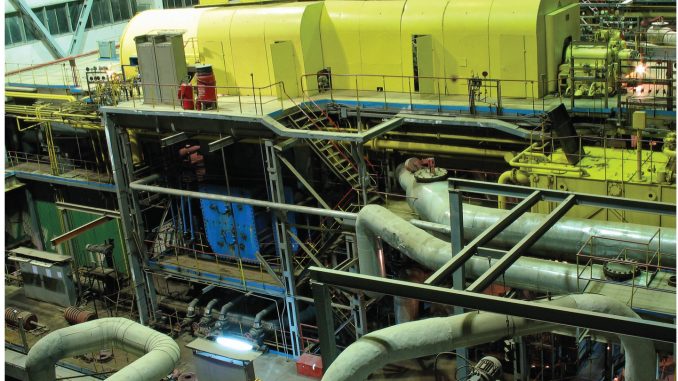
Thermal power remains the backbone of the country’s energy economy as 70 per cent of the installed capacity is fired by fossil fuels (predominantly coal, besides gas and diesel). Consequently, thermal power plants (TPPs) are a major contributor to greenhouse gas emissions as more than 80 per cent of emissions come from these power plants. Although the dependence on fossil fuels to meet energy needs will continue for years to come, steps need to be taken to control emissions and ensure energy efficiency in the power generation segment. One option is to improve the existing energy infrastructure by adopting practices that help increase the thermal efficiency of coal-fired power plants, in order to achieve desirable operational performance and reduce emissions. A higher plant load factor and plant availability do not automatically translate into optimum heat rate. Even best-run units have potential for heat rate and energy efficiency improvement.
Therefore, it is essential to implement operations and maintenance (O&M) best practices for improving a plant’s energy efficiency. These best practices entail following well-established operating procedures, reducing the operating period of the unit at low loads or beyond the design limit, cycling the unit as per the recommendations of the manufacturers, and operating controllable parameters as per the original equipment manufacturer guidelines. In old plants, greater efforts are needed to bring back units to their rated capacity. Also, phasing out of inefficient units to keep pace with the latest technologies is the need of the hour.
Punjab State Power Corporation Limited (PSPCL) has taken some commendable initiatives in this regard. Power Line highlights some of these initiatives for improving plant efficiency…
Set up in 2010 as one of the two successor entities after the unbundling of the Punjab State Electricity Board, PSPCL is responsible for handling the power generation and distribution business in the state. The transmission business, meanwhile, is managed by Punjab State Transmission Corporation Limited.
PSPCL operates its own power plants and also gets power supply from the Bhakra Beas Management Board. In addition, it is allocated power from central power projects. The company’s own capacity comprises three TPPs and five hydropower plants with a combined capacity of around 3,770 MW. Apart from these projects, PSPCL operates a few micro-hydro projects.
PSPCL is dedicated to evolving, improving and sustaining energy conservation through improving plant utilisation, benchmarking specific energy consumption with the best norms in the country, monitoring energy consumptions to identify areas for improvements, improving utilisation of auxiliaries for optimisation of energy consumption, promoting energy awareness and encouraging employee participation for energy conservation.
The utility has witnessed all phases of ageing in its power plants since 1974. The oldest units at the Guru Nanak Dev Thermal Plant (GNDTP), Bathinda, have undergone remnant life assessment studies. Based on these studies, renovation and modernisation (R&M) was carried out to give these units 15 years of extended life, as a result of which, all the units at the GNDTP are capable of running at full load.
During R&M, various technologically advanced and efficient machines replaced the old ones. Energy audits, heat rate studies and fuel audits were carried out regularly and recommendations based on these studies were implemented to achieve better energy efficiency results.
The major works carried out at the GNDTP as a part of R&M included uprating of the units from 110 MW to 120 MW, replacement of high pressure (HP)/medium pressure/low pressure (LP) rotor turbines and LP casing, replacement of condensate extraction pumps and their motors, replacement of the furnace and its ducting, replacement of induced draught fans, forced draught fans and primary air fans and their motors, addition of two electrostatic precipitator fields, installation of a direct fired system with vertical bowl mills and complete replacement of the instrumentation with a distributed control system.
The unit also replaced two intake pumps at a cost of Rs 0.8 million, leading to annual energy savings of 18,800 kWh. Another key initiative that the unit took was the replacement of the air washer systems in all the units. The measure entailed an investment of Rs 2.78 million and resulted in savings of 392,761 kWh.
At the GNDTP, the BFP-1B and 2A cartridge was modified to a five-stage pump instead of the six-stage pump. This modification helped save 2-3 per cent on account of a reduction in hydraulic losses in hydraulic coupling and resulted in a 2-3 per cent gain in pump efficiency due to the shifting of the operating point near the best efficiency point. This modification resulted in a saving of more than 170 kW of power at full load on each pump.
At the 1,260 MW Guru Gobind Singh super thermal plant, Ropar, PSPCL carried out retrofitting of 210 MW boiler preheaters in Units 1 and 2, retrofitting of HP heaters 5 and 6 of Unit 2, replacement of boiler feed booster pumps in Units 1 and 2, replacement of the 12-sector rotary air preheater with a modified design 24-sector air preheater in Unit 2, resulting in a saving of Rs 114 million per year.
PSPCL made an in-house investment in the Guru Hargobind thermal plant at Lehra Mohabbat for replacing the impellers of cooling water pumps 1A and 1B with modified impellers and removing the fifth stage from the total five stages of the impeller, leading to a total saving of 7.5 MUs.
The way forward
To achieve the energy efficiency targets, which are becoming increasingly more stringent, greater vigilance and improvements in the overall culture need to be ensured in the thermal power sector. Practices such as the wide adoption of technologies deployed in best-performing plants, challenging the best-performing plants to seek additional efficiency improvements, and retiring poor-performing plants where improvements are not technically or economically feasible need to be followed for ensuring energy efficiency in TPPs. n
Based on a presentation by A.P. Singh, Deputy Chief Engineer, PSPCL, at a Power Line conference

